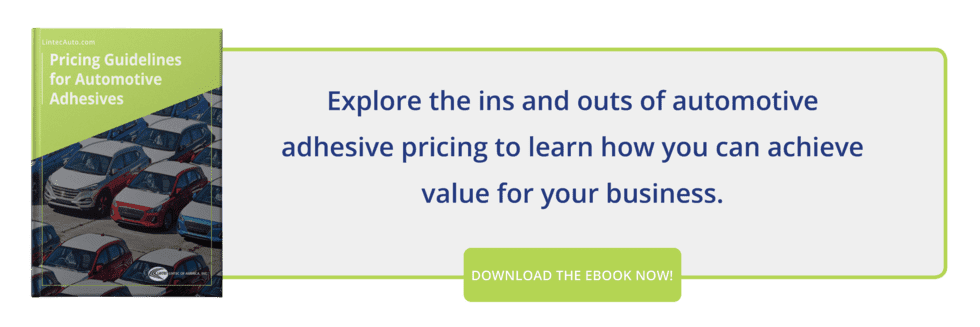5 Ways to Maximize Your Budget For Custom Automotive Labels

Any “custom” project begins with some unknowns, but there’s no reason for custom automotive labels to break the bank. Cost-efficient products and procedures can create value you can pass on to OEMs, helping you meet downstream price points—even with a custom labelling project.
How to Budget For Custom Automotive Labels
To get the most out of your budget, follow these 5 principles:
1) Set the target price for your automotive label supplier ahead of time.
This might be a price-based, cost-based, or value-based target. In the automotive industry, it’s most common to set supplier cost targets around documented cost drivers and a transparent, agreed-upon margin. Open books and a collaborative mindset can turn clear targets into an effective motivator for lean manufacturing practices.
Also, a target price helps your supplier better serve your budget considerations with its product portfolio. One material may come in at a number of potential price points, depending on the thickness, the adhesive layer, and other factors that can be adjusted to reach the right price.
2) Test samples of the custom automotive labels first so you can buy them in bulk.
Bulk label ordering helps your supplier offer a more competitive price point. But you wouldn’t want to walk blind into a supplier relationship without proof that it’ll work out in the long term.
Take the time to request small samples of the product in advance of the final agreement. Put the samples through rigorous testing to ensure that they’ll meet your standards. The results could help you commit to a more sizable deal that you would have otherwise signed, at a better overall rate for your budget.
3) Save on good customer service from a reputable label supplier.
Good customer service is often (understandably) confused with customer satisfaction initiatives. An excellent article from Supply Chain Quarterly gave two great examples that I’d like to share:
- A company might include next-day delivery for all of its customers—even if not all of them want or need it. The result is that they’re “overservicing” some of their accounts, which wastes money and has a negative impact on costs for customers.
- Another company might offer free delivery to a customer who called with complaints, as an ‘olive branch.’ This pleases the customer, but the total loss of revenue may be unsustainable and can ultimately impact costs and margins. It would have been better to eliminate the complaints by ensuring that the underlying problems didn’t happen again.
A supplier with a reputation for excellent service uses a disciplined, defined approach that treats service with a healthy combination of empathy, urgency, and efficiency that will benefit both sides. An automotive label supplier that aligns customer service closely with customer requirements saves you money, creates more profits, and earns your loyalty.
Dive into reviews, testimonials, and other social proof about the supplier’s service performance before you commit to your purchase.
4) Simplify your custom automotive label design for cost efficiency.
Label aesthetics, legibility, and regulatory compliance are all critical factors in your purchasing decision. To some degree, these will define the boundaries of your design. However, any opportunity to opt for a simpler design will maximize your budget. You could:
- Eliminate white space to reduce label size
- Opt for fewer colors (or go monochrome)
- When possible, locate automotive labels on surfaces that adhere easily
5) Select adhesives that stick to your needs—don’t go overkill on specs.
Some locations—such as the engine compartment—will naturally require more robust materials and adhesives. Areas like the dashboard or interior of the windshield will not require the same class of heavy-duty labels but will still have their own unique needs (e.g., resistance to long-term UV radiation).
When selecting automotive labels, make sure to opt for the most economical solution with the fewest unnecessary traits and unusable features. You want quality, but only within the scope of the actual environment the label must survive.
These five principles will stretch your budget and boost your margins on parts with custom automotive labels.


